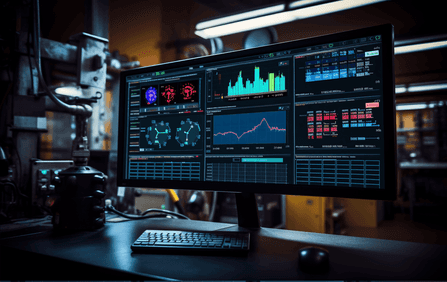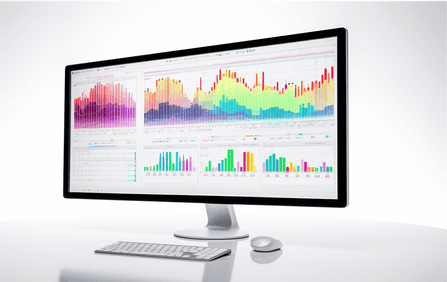Software observability and telemetry: a path to clearer insights

In the digital age, software systems have become increasingly complex, and the need for effective monitoring and diagnostics has never been higher. As professionals in the IT realm, we often find ourselves grappling with error reports that tell us when something went wrong but leave us in the dark about the why and how. Logs, while invaluable, can sometimes be akin to looking for a needle in a haystack. So, how do we bridge this gap between knowing there's a problem and understanding its root cause?
The Challenge: Deciphering the Unknown
Imagine this: You receive an error report. The timestamp tells you when the issue occurred, but as you dive into the logs, you're met with a jumble of information that's hard to decipher. The logs are there, but drawing meaningful conclusions feels like an insurmountable task. This scenario is all too familiar for many IT professionals. The data is available, but it's not always actionable.
The Solution: Linking Traces and Logs
Enter the world of software observability and telemetry. Observability isn't just about collecting data; it's about understanding the state of your system based on the data you have. By linking traces (a record of operations) and logs, you can create a cohesive story of what's happening in your system.
When you apply an appropriate log format, you transform your logs from a chaotic stream of information into a structured, queryable source of insights. This structured format allows for easier filtering, searching, and analysis. Instead of sifting through lines of text, you can quickly pinpoint where things went wrong and why.
The Power of Telemetry
Telemetry takes this a step further by providing real-time data from your applications, allowing you to monitor performance, track errors, and even predict future issues before they occur. With telemetry, you're not just reacting to problems; you're proactively improving your system's reliability and performance.
Real-World Applications of Observability and Telemetry
To further illustrate the transformative power of observability and telemetry, let's delve into three real-world scenarios where these tools can be game-changers:
E-Commerce Platform Performance Monitoring
Problem: An e-commerce platform experiences intermittent slowdowns during peak shopping hours, leading to cart abandonment and lost sales.
Solution with Observability: By linking traces and logs, the platform's IT team can identify bottlenecks in real-time, such as a specific database query taking too long or an external API causing delays. Telemetry data can further provide insights into user behavior, helping pinpoint areas where performance improvements can significantly enhance the user experience.
Healthcare System Data Flow
Problem: A hospital's patient management system occasionally fails to update patient records in real-time, leading to potential treatment delays or errors.
Solution with Observability: Implementing observability tools can help trace the flow of patient data through various microservices. If a particular service fails or slows down, the logs provide immediate insights into the cause, whether it's a server overload, a software bug, or a third-party integration issue. Telemetry can further monitor system health, predicting potential failures before they impact patient care.
Financial Services Transaction Analysis
Problem: A banking application sometimes processes transactions with a delay, causing customer complaints and trust issues.
Solution with Observability: Observability can track each transaction's journey, from initiation to completion. If a delay occurs, the linked traces and logs can quickly identify the problematic step, be it a security verification process, a communication breakdown with another financial institution, or a faulty algorithm. Telemetry can provide real-time metrics on transaction volumes, speeds, and error rates, allowing for proactive system adjustments.
By integrating observability and telemetry into these scenarios, businesses can not only solve existing issues but also optimize their systems for future challenges, ensuring consistent performance and user satisfaction.
From Problem to Solution: A Journey of Awareness
By approaching the issue from a problem-to-solution perspective, we build awareness. We recognize the challenges faced by IT professionals and offer a clear path to resolution. Observability and telemetry aren't just tools; they're a mindset, a commitment to understanding and improving our digital landscapes.
A Practical Demonstration
For those keen on seeing observability and telemetry in action, we invite you to explore the Observability Playground. Dive in, experiment, and witness firsthand the transformative power of these tools.
On a final note
In conclusion, in a world where digital systems are integral to our daily operations, having a clear understanding of these systems is paramount. Software observability and telemetry offer a lens through which we can gain clearer insights, make informed decisions, and ensure the reliability and performance of our applications. As we journey from problem to solution, we not only address immediate challenges but also pave the way for future innovations.





